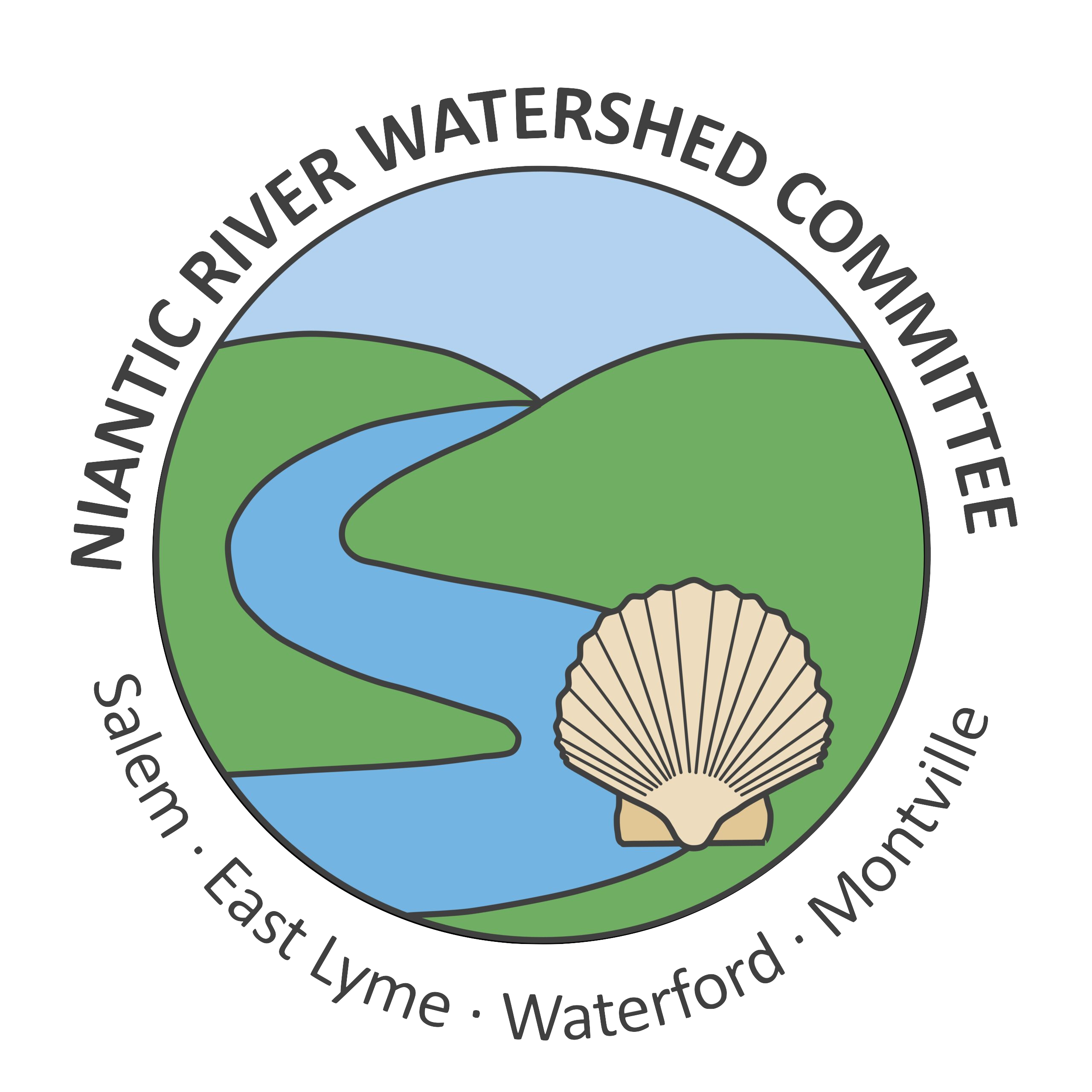Niantic River Estuary Modeling
On January 19, 2016, the Nitrogen Work Group announced the selection of a data synthesis and nitrogen effects project to Drs. Jamie Vaudrey, Jason Krumholz, and Christopher Calabretta of the University of Connecticut.
Their proposal was to fulfill the following project objectives:
- Synthesize available data to evaluate the relationship between environmental impacts (eelgrass extent, hypoxia) and stressors (river flow, nutrient input)
- Develop an ecosystem model (biogeochemical coupled to physical mixing) based on work done in Narragansett Bay,
- Develop recommendations for a target nitrogen load protective of eelgrass,
- Utilize already developed watershed nitrogen loading model to evaluate mitigation strategies, and
- Assess the transferability of this study to other LIS embayments.
For more information and project results, visit Dr. Vaudrey’s webpage .
Stream Corridor Assessment
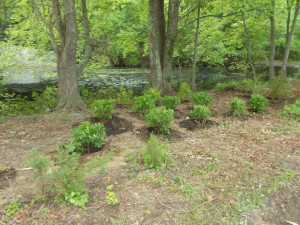
In 2014, the NRWC conducted a stream corridor assessment within selected sections of Latimer Brook in East Lyme. This assessment identified and evaluated landscape conditions and infrastructure such as stormwater outfalls that might impact stream habitat and water quality. We used a protocol developed by the USDA Natural Resource Conservation Service called Stream Walk. This assessment documented conditions that included nearby land use, the presence or absence and relative abundance of riparian vegetation, the presence of stream conditions such as excessive plant growth or algae, cloudy or murky water, odors, stream bank erosion, and trash or debris. All these indicate or contribute to poor water quality conditions. Our committee has used this information to identify areas where stormwater management projects or community outreach can be conducted to improve water quality conditions.
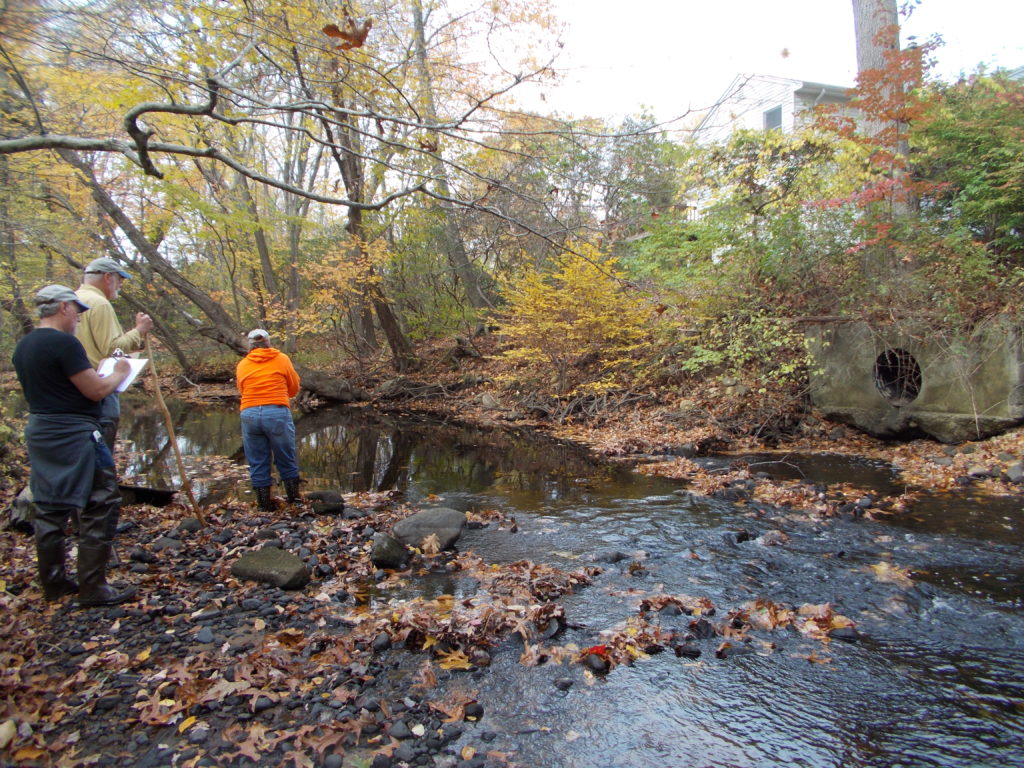
Colony Road/Village of Niantic/Mago Point Stormwater Projects
Working with our partners in the Eastern Connecticut Conservation District, CT DEEP, and town staff, we completed projects in East Lyme and Waterford designed to reduce the effects of stormwater flowing into the Niantic River or its tributaries. These include the Colony Road tree filters (2013), Mago Point vegetative buffer (2014) and tree filters (2016), Pennsylvania Avenue tree filters (2016), and the Grand Street stormwater practices project (2018). All these initiatives were designed to reduce or eliminate various types of pollutants in our waterways by using innovative green technologies. Interpretive signage to educate the public has been placed near the Colony Road stormwater projects.
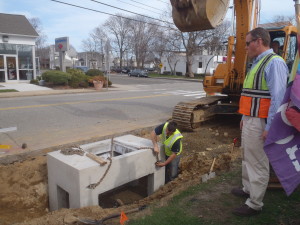
NRWC/LISS Lawn Fertilizer Change Campaigns
From 2017 through 2019, the NRWC participated with various partners, including the Eastern Connecticut Conservation District, The Nature Conservancy, CT Sea Grant, and the Long Island Sound Study, in a study designed to change the behavior of homeowners residing near the Niantic River regarding lawn fertilizer use. The goal was to persuade residents to reduce both the frequency and amount of lawn fertilizers applied each year. The program was successful in that many of those spoken to agreed to reduce their use of fertilizer. A related matter is that the NRWC has donated money during the last several years to Waterford-East Lyme Shellfish Commission (WELSCO) to help pay for an advertisement in The Day (New London) newspaper urging residents to reduce their use of fertilizers to protect Niantic River water quality.
In partnership with many organizations throughout the region, we conduct water quality management, including water quality monitoring and water quality improvement projects; habitat restoration; outreach and education to areas residents and schools; and we advocate for the protection of the Niantic River and the surrounding watershed.
Small Farm Best Management Practices
In 2017, the NRWC provided outreach and technical assistance to small farm owners wishing to learn about methods to manage stormwater runoff on their farms. Geared toward small producers and private farm owners, this program assisted farm owners with diverting clean water to reduce farm runoff, managing heavy use areas, and adopting manure best management practices (BMPs). For more information, please visit the Small Farm BMP page on this site. This project was funded in part by a Dominion Foundation Environmental Stewardship grant. The NRWC remains available to assist small farm owners within the watershed having any issues related to stormwater management or other environmental matters. Please contact our Coordinator.
NRWC Stream Water Quality Monitoring
In April 2012, the Monitoring Subcommittee began a water quality (WQ) monitoring program in Latimer Brook and Cranberry Meadow Brook in Montville and East Lyme. Once a month, an NRWC member, often assisted by volunteers, collected WQ data. These included water temperature, dissolved oxygen, pH, specific conductance, and nitrogen concentration (as nitrate-nitrogen). In 2014, the WQ monitoring program was expanded to include sampling sites on Oil Mill Brook and Stony Brook in Waterford. After evaluating the WQ data, the Monitoring Subcommittee decided to end watershed-wide sampling and begin event-based sampling in the summer of 2017. This sampling documented how rain events affected WQ parameters in Latimer Brook. Sampling took place quarterly at the Latimer Brook dam in Flanders and continued through the spring of 2022. Our WQ data provide essential information on baseline water quality conditions in the streams. It allowed us to identify and evaluate spatial, seasonal, and annual variations in water chemistry parameters, how they vary under precipitation events, and estimate the flux of nitrogen into the Niantic River. The NRWC and watershed municipalities use these data to identify areas where water quality is less than optimal and water quality improvements can be made. A report on this 10-year WQ monitoring was completed in August 2023.
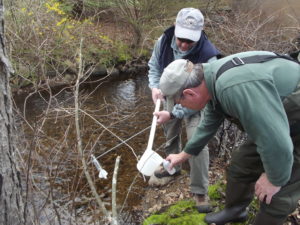
Riffle Bioassessment by Volunteers (RBV)
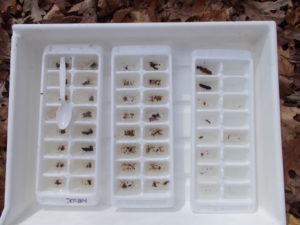
RBV is a community-based aquatic macroinvertebrate assessment developed by CT DEEP to assess aquatic habitat. This assessment uses the presence or absence of pollutant-sensitive riffle-dwelling aquatic invertebrates to estimate the relative health of a stream. Riffles are areas within a stream where the streambed rises to intercept the water surface, creating highly oxygenated environments where many aquatic insects can be found. In particular, the presence of pollution-sensitive insects, which includes stoneflies, mayflies, and caddisflies, generally indicates that stream water quality is very good. RBV volunteers are required to complete a training program created and overseen by CT DEEP.
RBV sampling is conducted during fall and takes place in riffle areas of streams having stony substrates. NRWC volunteers have sampled several sites in the Niantic River tributaries in conjunction with our partners, including the East Lyme Commission for the Conservation of Natural Resources, Town of Waterford staff, and citizen volunteers. Although macroinvertebrate types are identified in the field, voucher collections are sent to CT DEEP for confirmation and compilation of macroinvertebrates, with species placed into classes termed “Most Wanted”, “Moderately Wanted”, “Least Wanted”, and “Others”. The numbers collected in each class can inform us about water quality. We have sampled several sites in Latimer Brook and Cranberry Meadow Brook over successive years to create baseline information and observe any changes in the presence of macroinvertebrates that might indicate changes in water quality.
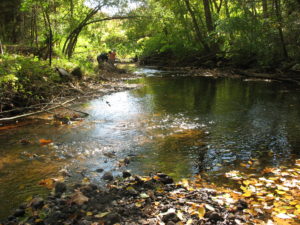
For more information regarding RBV monitoring and to see the results of state-wide surveys, visit the CT DEEP River Bio-assessment by Volunteers (RBV) web page.
Contact the Watershed Coordinator at NianticRWC@gmail.com to learn more or to volunteer.
